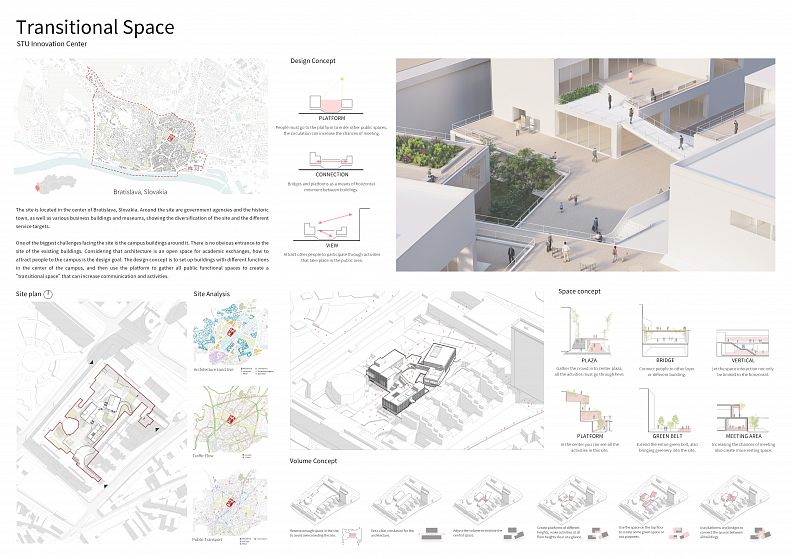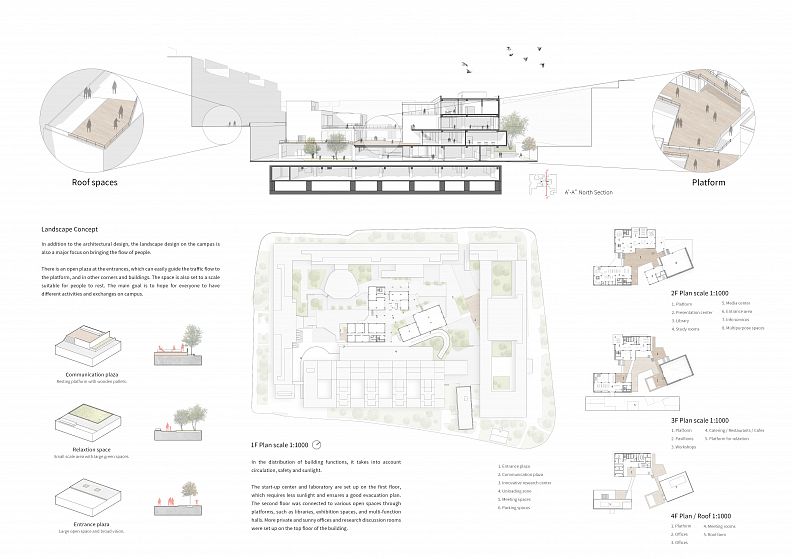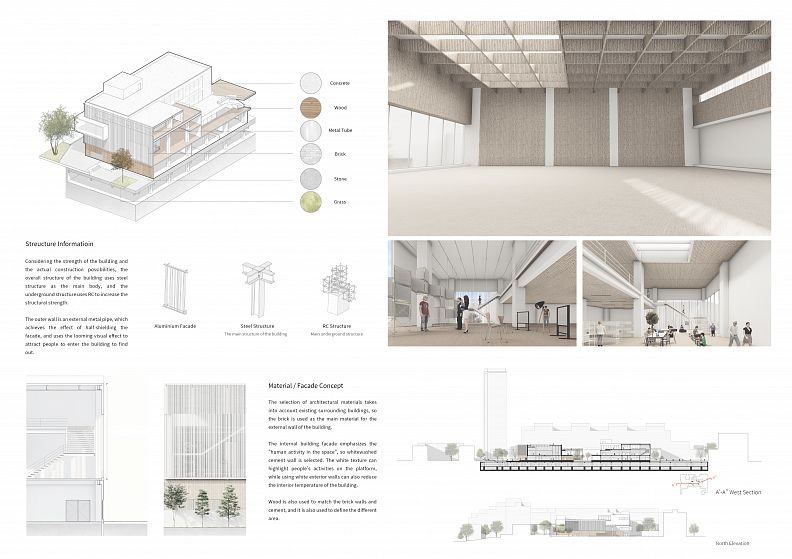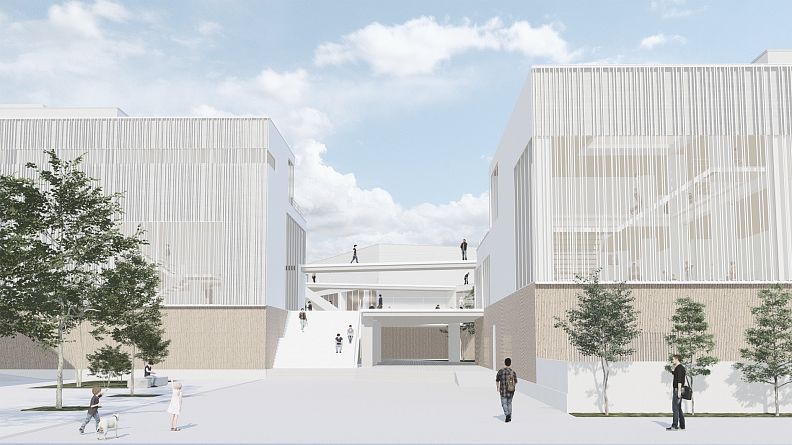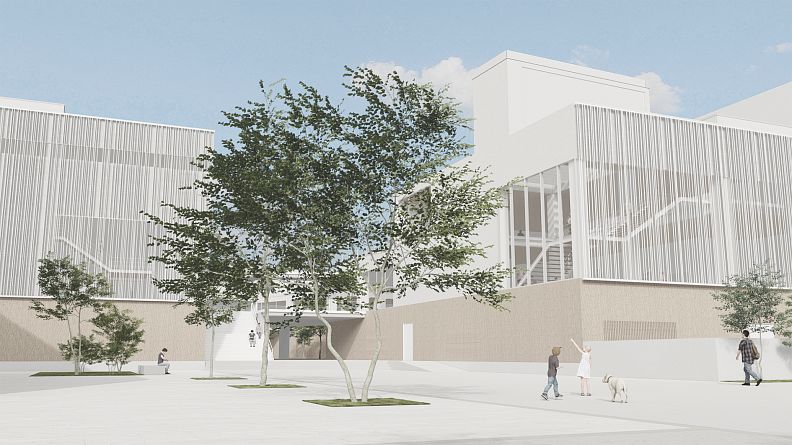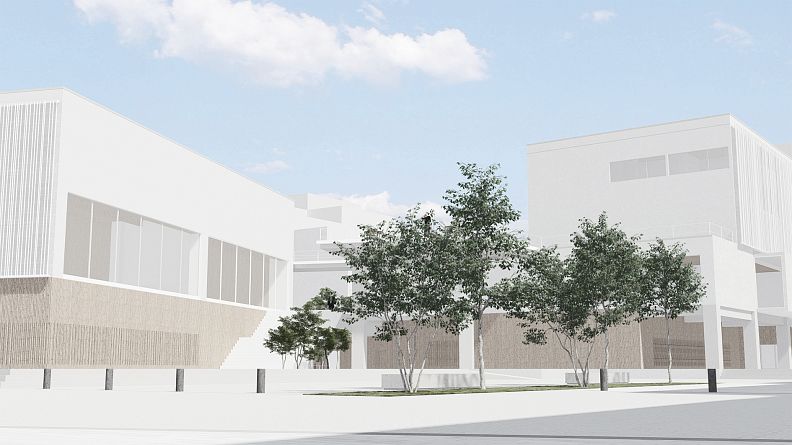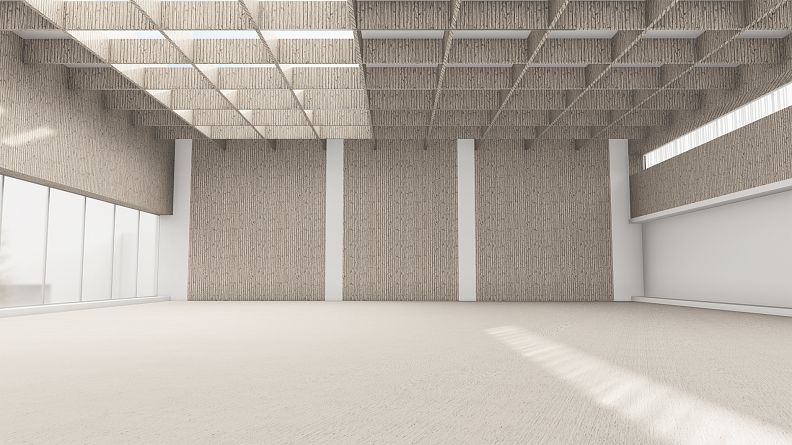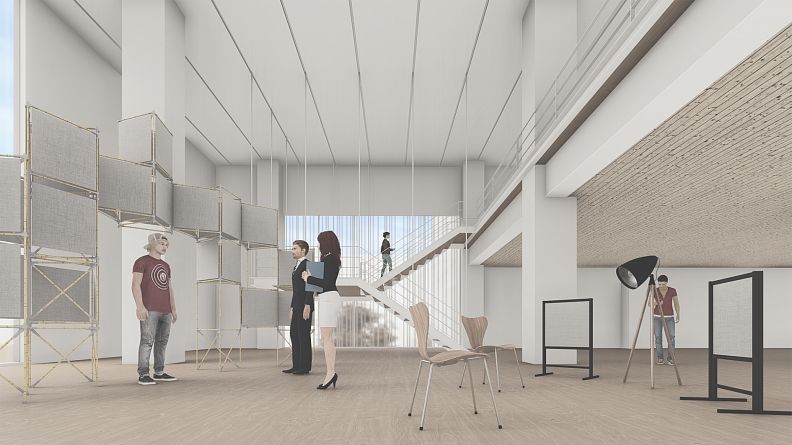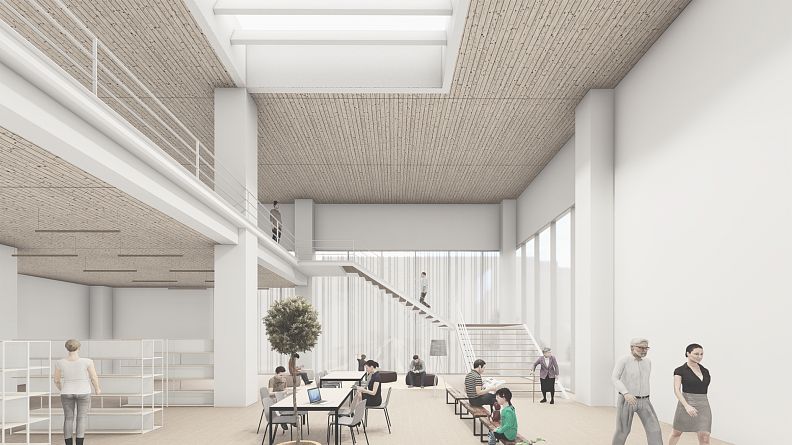Transitional Space

Project idea
The site is located in the center of Bratislava, Slovakia. Around the site are government agencies and the historic town, as well as various business buildings and museums, showing the diversification of the site and the different service targets.
One of the biggest challenges facing the site is surrounded by the buildings of STU. Considering that architecture is an open space for academic exchanges, how to attract people to the campus is the design goal. The design concept is to set up buildings with different functions in the center of the campus, and then use the platform to gather all public functional spaces to create a "transitional space" that can increase communication and activities.
In the distribution of the building functions, it takes into account circulation, safety, and sunlight. The start-up center and laboratory are set up on the ground floor, which requires less sunlight and ensures a good evacuation plan. The first floor is connected to various open spaces through platforms, such as libraries, exhibition spaces, and multi-function halls. More private and sunny offices and research discussion rooms are set up on the top floor of the building.
Project description
In addition to the limitations of the site itself, another major challenge is the various service targets. The site is surrounded by popular tourist attractions, and it is also covered by multiple government agencies and commercial buildings, which means that students and researchers are one of the service targets. Going back to the architectural aspect, the function of the building is intended to design an interactive platform for exchanging exploring ideas and views.
In terms of the configuration of the building's function, the circulation and service targets take into consideration.
Public spaces are placed on the first floor at the starting point of the platform. Composite spaces to meet different ethnic groups on the site.
The landscape design on the campus is also a major focus on bringing the flow of people. There is an open plaza at the entrances, which can easily guide the traffic flow to the center building, and further to each corner and buildings. The space is also set to a scale suitable for people to rest. The main goal is to hope for everyone to have different activities and exchanges on campus.
Technical information
The selection of architectural materials takes into account existing surrounding buildings, so brick is used as the main material for the external wall of the building. The internal building facade emphasizes the "human activity in the space", so a whitewashed cement wall is selected. The white texture can highlight people's activities on the platform while using white exterior walls can also reduce the interior temperature of the building. Wood is also used to match the brick walls and cement, and it is also used to define the different areas.
Considering the strength of the building and the actual construction possibilities, the overall structure of the building uses steel structure as the main body, and the underground structure uses RC to increase the structural strength. The outer wall is an external metal pipe, which achieves the effect of half-shielding the facade, and uses the looming visual effect to attract people to enter the building.

